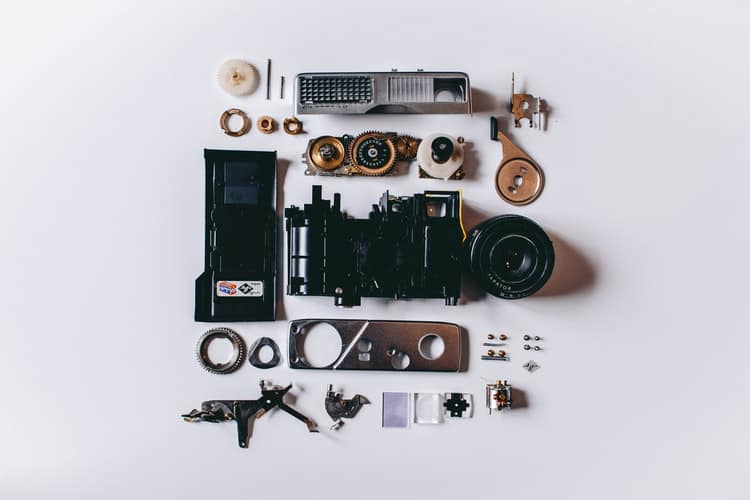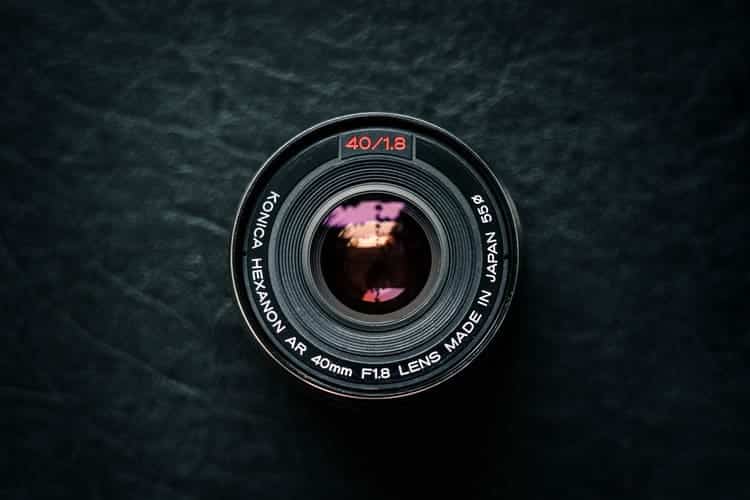
You must have already seen an advanced DSLR camera before. Ever wonder how many components get together to click a stunning picture?
The camera, as one entity, has so many parts.
Variations in the camera parts result in a completely different type of camera. Your camera components are supposed to be suitable for your photography genre.
While many photographers have great photography skills, they might not be aware of the components.
As a photographer, you must have a thorough knowledge of different parts of a camera.
Essential camera parts that you must be aware of –
- Camera Body
The camera body is what you hold in your hands while clicking pictures. Usually, the DSLR camera has a bulky body, while the travel camera comes with a pocketable camera body.
You will find all control dials and buttons on the body, such as the shutter release button, power button. The camera body and the control buttons vary as per camera type and brand.
Some camera bodies have built-in non-removable lenses, while others are interchangeable lens cameras.
The camera body has everything to do with your comfort of holding, weight, and size.
- Lenses

The lens is the eye of your camera. Detailed knowledge of lenses can lead you to domain-specific photography.
Lenses have different types and subtypes: Prime lenses, wide-angle lenses, tilt-shift lenses, telephoto lenses, and more.
The camera body supports the majority of the lens types. Light enters the camera via lens and processes the picture for you.
Lenses also have a different aperture that controls the amount of light entering.
- Image sensor
The image sensor is another crucial component of the camera. Your picture won’t get processed without the sensor.
The image sensor has two essential roles. One is to capture and process the light coming from the lens. And the second is to send the picture to the memory card by converting it into an electronic signal
Photosites, AKA pixels, grid inside the camera sensor do all the processing. The larger the sensor, the more pixels are, resulting in a better quality picture.
Digital cameras usually come with either CMOS or CCD sensors.
- Viewfinder
The viewfinder is where you can see how much the subject area is getting covered in the picture.
Digital cameras usually come with either an optical viewfinder or the electronic viewfinder.
Modern cameras have a 3inch LCD screen working as the viewfinder. The screen is more convenient than the lens working as a viewfinder. The screen also lets you control some of the camera features via touch functionality.
Nowadays, the digital viewfinder shows additional details such as aperture, shutter speed, and ISO of the picture before clicking it.
- ISO
ISO is the non-physical component of the camera. While the lens and image sensor together controls light physically, ISO adjusts the light sensitivity.
Higher value ISO captures the stunning picture even in low light. It’s better suited while shooting indoors.
ISO is the hero that minimizes the noise from the picture clicked in low light. You can raise the ISO sensitivity by amplifying the signal. With the right ISO sensitivity, you can get better pictures even with a faster shutter speed.
You can control ISO manually, and if not, digital cameras have auto-ISO features as well.
Final Thoughts:
Know your camera before you start clicking pictures. Having a better knowledge of camera parts will improve your photography skills.
While there are so many parts of the camera, the above five are the basic ones to get you started with.
